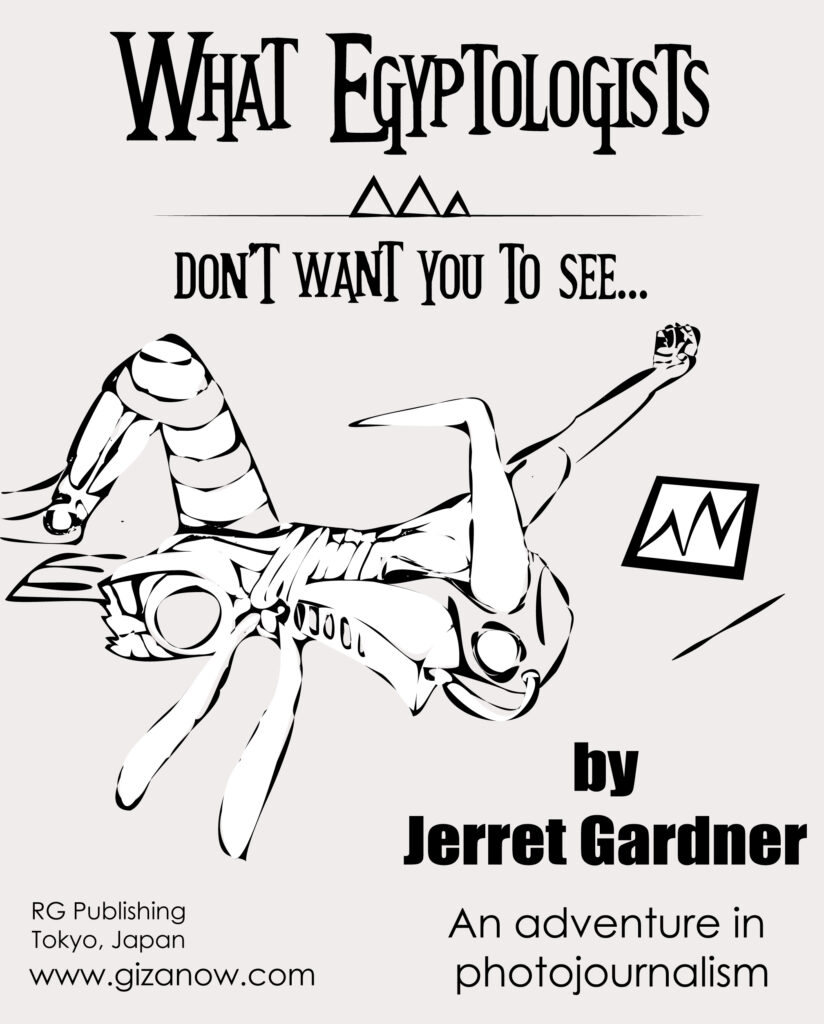Home The Books Press Room News Donations Contact
Press releases
News-Print:
TIDAL EROSION PATTERNS DISCOVERED ON GREAT PYRAMID BLOCKS
FORMER MILITARY JOURNALIST PUBLISHES PHOTOGRAPHIC EVIDENCE OF AN ANCIENT FLOOD THAT ONCE COVERED THE GIZA PLATEAU
Sagamihara, Kanagawa, Japan, – March 30th 2013. Recently published photographs showing tidal eroded Great Pyramid blocks, once again puts into question their actual age. The erosion patterns first discovered by Egyptian researcher Sherif El Morsi, have been photographed and released by veteran Navy journalist Jerret Gardner as part of a book series that claims to show evidence Egyptologists don’t want you to see. According to Gardner, finding tidal erosion patterns on pyramid blocks came as a bit of a surprize. “They are most commonly found along shorelines, not on pyramid casing blocks,” he said. “I really couldn’t believe what I was seeing.” He knew this meant he had just found even more evidence in support of Morsi’s controversial theory. A theory that states the pyramids were first surrounded and eroded by an ancient three meter deep intertidal basin long before the wind and sand erosion ever began to take hold. “According to Morsi 25 centimeters of block material loss can be calculated in the tens of thousands of years,” said Gardner. “So when a megalithic size block has more than two thirds of its mass missing and tafoni pitting still present on its surface — you know its construction took place much earlier than 2500 BCE.” MORE! 2500 BCE, or in other words 4500 years ago. This is the date that orthodox Egyptology has attributed to the building of the 1st Great Pyramid. In 2009 author and photographer Jerret Gardner spent 30-days traveling across Egypt photographing and documenting the evidence used in most modern controversial pyramid theories. Theories such as the pyramids were built with the assistance of high powered tools and pourable stone concretes instead of copper chisels and wood mallets. “Egyptology’s long standing paradigm has literally tons of evidence that doesn’t support it, and people everywhere have the right to know what’s going on,” he said. The book, “What Egyptologists don’t want you to see!” is now on sale in both black and white and high definition color eBook formats as well in black and white print. All are available through the amazon online store. Jerret Gardner currently lives in Sagamihara, Japan with his wife and family where he has been teaching since he left the Navy. He has independently researched Egypt’s monuments for over 15 years with 4 trips curently under his belt. ###
News-Radio:
EGYPTOLOGISTS SUFFER MAJOR BLOW
FORMER MILITARY JOURNALIST PUBLISHES DAMNING PHOTOGRAPHIC EVIDENCE
Sagamihara, Kanagawa, Japan, – March 30th 2013. If a picture is indeed worth a thousand words – then the words, ancient Egyptian workers, copper chisels, wooden mallets, and tombs for dead pharaohs are chillingly absent from these photos. In August of 2009 former military journalist Jerret Gardner spent 30-days scouring Egypt’s pyramids and temples looking for the evidence he says Egyptologists don’t want you to see. He has photographed and published tidal erosion patterns on Great Pyramid blocks and compared them to tidal erosion patterns found on common beach rock. The author has also photographed and published evidence of power tool use on Great Pyramid blocks and compared them to the tool marks left behind by modern power tools – This plus much more. “Egyptology’s long standing paradigm has literally tons of evidence that doesn’t support it, and people everywhere have the right to know what’s going on,” he said. The book, “What Egyptologists don’t want you to see!” is on sale now in both black and white and high definition color eBook formats as well in black and white print. All are available through the amazon online store. Jerret Gardner currently lives in Sagamihara, Japan with his wife and family where he has been teaching since he left the Navy. He has independently researched Egypt’s monuments for over 15 years with 4 trips curently under his belt. ###




